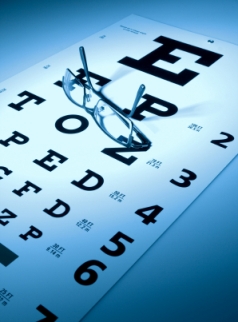 Glaucoma
Glaucoma
Glaucoma is the second leading cause of blindness in the world and is the leading cause of blindness among African-Americans between the ages of 45 and 65. Estimates indicate that throughout the world approximately 100 million people are suffering from glaucoma. Even with treatment, 10 per cent of those diagnosed with glaucoma will lose vision.
Factors that increase a person’s risk for glaucoma include being diabetic, having a family member diagnosed with glaucoma, being over 60 years of age, and being severely nearsighted. Steroid use, as required by severe asthmatics, also increases a person’s risk of developing glaucoma.
Glaucoma affects the optic nerve, which transmits visual information from the eye to the brain. There are no symptoms until vision loss has already begun, and unfortunately, this loss cannot be regained even after starting treatment.
Vision loss begins with side-peripheral vision, and without treatment this condition eventually steals all vision. Glaucoma usually progresses slowly, but in some cases it may progress quickly. Because vision loss is irreversible, the only way to prevent it is to get tested and, if glaucoma is detected, begin treatment immediately.
Following a diagnosis of glaucoma you will have to be closely monitored by your doctor. Medication, and in some cases surgery, can help to manage the condition.
It is important that your intraocular pressure be maintained at an acceptable level. Fifty per cent of people with glaucoma have high intraocular pressure, which can damage the optic nerve and lead to vision loss. Your ophthalmologist can detect glaucoma damage by examining your optic nerve. A healthy nerve will have a small cone-shaped hole in the centre. Glaucoma causes this hole to enlarge and results in loss of healthy tissue.
An additional test may be performed to detect the loss of peripheral vision. A visual fields test involves placing your head into a specially designed headrest and staring straight ahead at a light, while a machine flashes lights in your side vision. You are required to press a button when you see a light. The machine prints out the result of the test, indicating whether you have any peripheral vision loss. Further testing may be available if a person is at increased risk for developing glaucoma but not yet showing symptoms.
The Glaucoma Research Foundation suggests the following guidelines for visiting your eye doctor:
? have your eyes tested at ages 35 and 40
? between the ages of 40 and 60, get tested every two to four years
? after age 60, have your eyes tested every one to two years
? after age 35, anyone with high risk factors should be tested every year or two
To find out more about glaucoma and what you can do to prevent vision loss, visit The Glaucoma Research Foundation, the University of Ottawa Eye Institute, or The Glaucoma Foundation.


